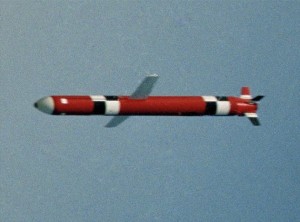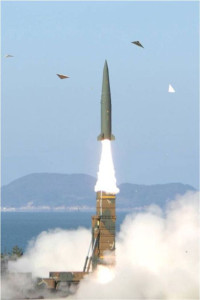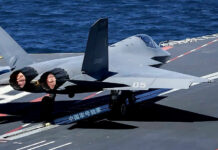
After years of negotiation, South Korea and the United States have reached an agreement in support of extending the reach of the South’s ballistic missiles. Under this agreement, Seoul will be allowed to deploy ballistic missiles with a range of 800 kilometers bringing all of North Korea within striking range of the South’s missile arsenal.
Under a 1979 agreement between the two allies, revised later in 2001, South Korean ballistic missiles were limited to a range not to exceed 300 kilometers and a maximum weapon’s payload of 500 kilograms. Successive American administrations had sought to restrict Seoul’s ballistic missile capabilities in keeping with limitations outlined in the Missile Technology Control Regime (MTCR), a voluntary international accord designed to limit a burgeoning proliferation of advanced missile technology.
The restrictive provisions of the 2001 agreement placed South Korea in an inferior position compared to North Korean missile capabilities, a situation that has caused Seoul considerable unease as Pyongyang continued an unrelenting policy of modernizing the capabilities of the North’s military force.
North Korea’s ruling regime has successfully developed a ballistic missile arsenal capable of reaching any location in the South and all US military facilities in Japan and Guam. In contrast, some key military sites in the North were previously out of range of South Korea’s ballistic missiles limiting the South’s ability to deliver a decisive retaliatory strike should hostilities once again erupt between the two Korean Peninsula rivals.
Pyongyang attempted a long-range rocket launch in April that proved to be a highly-publicized failure when the rocket exploded shortly after launch. This attempt was undertaken in total disregard of widespread international opposition and was quickly condemned by the United Nations’ Security Council. The United States and her Pacific allies considered this launch to be nothing more than a thinly-disguised ballistic missile test despite Pyongyang’s claims that this endeavor was an attempt to place a satellite into Earth orbit.

The revised US-South Korean agreement authorizes Seoul to develop ballistic missiles with a range of 800 kilometers while continuing to limit warhead capacity to 500 kilograms. The South would be able to deploy missiles of 550-kilometer range with an increased payload of one ton. The new arrangement also authorizes the South to deploy unmanned drones limited to carrying a payload of 2,500 kilograms should they have a maximum range in excess of 300 kilometers. Drones with a range of 300 kilometers or less could be deployed without regard to payload restrictions.
South Korea is also authorized to deploy cruise missiles of unlimited range provided they are restricted to a payload not to exceed 500 kilograms. Some media sources have previously reported that Seoul has already deployed cruise missiles capable of flying more than 1,000 kilometers, claims the Seoul government has repeatedly refused to comment on.
The more lenient attitude with cruise missiles is tacit acknowledgement that cruise missiles, in general, fly at lower altitudes and much slower speeds than ballistic missiles are capable of and are, therefore, easier to intercept and defend against. Despite their altitude and speed limitations, cruise missiles are generally considered to be more accurate than other missiles.
White House Press Secretary Jay Carney told reporters accompanying President Obama on a campaign trip to California that the provisions of this agreement “are a prudent, proportional, and specific response” to the challenges and dangers posed by North Korea’s advanced military capabilities.
Pyongyang has yet to deliver a media response to the new agreement, but is expected to unleash a flood of criticism and threats. Undoubtedly, Pyongyang will characterize this agreement as proof Washington and Seoul are preparing to go to war against the North.
Technically, the North and South are still at war since the Korean Conflict of 1950-1953 ended in a ceasefire and not a peace treaty.
Extending the range of the South’s ballistic missiles will likely ignite protests from Russia and China as well and is likely to be an irritant to Japan in light of the continuing territorial dispute between Tokyo and Seoul.
It seems only prudent to equip South Korean forces with weapons at least equal to those the North possesses. If for no other reason, this agreement may give Pyongyang pause in the future when provocative activities against the South are being considered.

















